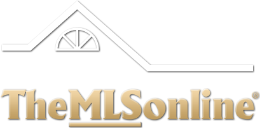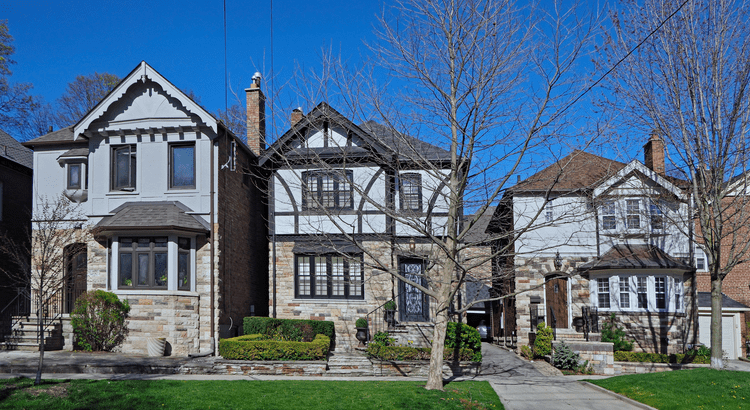Why has Minneapolis, Minnesota, transformed from a modest milling city to a bustling urban hub? Residents have witnessed the city’s skyline stretch upward, and its neighborhoods expand outward. They’ve seen the birth of thriving arts scenes and innovative business districts that now define this Midwestern metropolis.
This transformation didn’t happen overnight; it was fueled by strategic urban planning and community efforts. As they navigate through their ever-evolving cityscape, residents are not just spectators but active participants in shaping the future of Minneapolis. This growth story is not just about buildings and infrastructure but about the people who call this city home.
Key Takeaways
- Minneapolis’s transformation from a Dakota homeland to a bustling city highlights the importance of understanding and respecting the historical roots of urban areas.
- The city’s growth was significantly propelled by its natural resources, particularly water power, which fueled industries like lumber and flour milling, underscoring the impact of geography on urban development.
- Advancements in transportation, including railroads and bridges, were crucial in connecting Minneapolis to other regions, facilitating trade and population growth.
- Embracing technological and medical innovations has positioned Minneapolis as a forward-thinking city, attracting businesses and talent in these fields.
- Leadership in sustainable urban development and renewable energy initiatives demonstrates Minneapolis’s commitment to addressing climate change and promoting a healthier environment.
- The vibrant arts, culture, and culinary scenes in Minneapolis not only enrich the lives of residents but also attract tourists, contributing to the city’s economy.
- Understanding the role of realtors and the housing market is essential for anyone looking to be part of Minneapolis’s ongoing urban evolution.
Dakota Homeland and the Founding of Minneapolis
Original Inhabitants
The area now known as Minneapolis was once home to the Dakota people. They lived on this land for centuries before settlers arrived. The Dakotas had a deep connection with the land, rivers, and forests.
Acknowledging the original inhabitants is crucial. It honors the history and culture that shaped this region. The Dakotas were not just residents; they were stewards of the environment.
Treaty Significance
In 1851, a critical event happened: the Treaty of Traverse des Sioux. This treaty opened up the area for settlement by non-indigenous people. It marked a turning point in local history.
This agreement led to significant changes in the ownership and use of lands that are now part of Minneapolis. Sadly, it also resulted in hardships for indigenous communities who lost their ancestral homes.
Settlement Growth
Early settlers found an ally nearby in Fort Snelling’s presence. This military outpost played a key role in protecting newcomers and fostering community development.
Settlers began building homes, farms, and businesses around what would become Minneapolis.
- Sawmills
- Wheat farming
- Trading posts
These early efforts laid down roots for future growth into a bustling urban center.
Minneapolis Urban Evolution from Villages to Flourishing City
Village Unification
The transformation of Minneapolis from a cluster of villages into a unified city in 1867 marked the beginning of its urban evolution. This pivotal moment laid the groundwork for rapid expansion and development. The unification brought together various neighborhoods under one city government, streamlining decisions on infrastructure and public services.
Residents witnessed their towns merge into a single entity, fostering a sense of community and shared identity. This unity enabled more efficient planning and allocation of resources towards common goals. It was this strategic consolidation that set the stage for Minneapolis’s growth spurt.
Population Growth
Following the Civil War, Minneapolis experienced a population boom that significantly fueled its urban expansion. People flocked to the city seeking opportunities in burgeoning industries such as milling and manufacturing. The influx led to an increased demand for housing units, schools, parks, and other essential amenities.
To accommodate this growing population:
- New neighborhoods sprang up beyond traditional city limits.
- Parks were established as communal spaces for recreation.
- Housing units multiplied to provide shelter for new residents.
This demographic surge not only changed the physical landscape but also injected vibrancy into Minneapolis’s social fabric.
Streetcar Influence
The introduction of streetcars reshaped residential areas by making distant neighborhoods accessible. Residents could now live further from their workplaces without enduring long commutes on foot or horseback. Streetcars connected downtown with outlying districts like North Park, encouraging suburban living while maintaining ties to urban centers.
This transportation revolution had profound effects on how cities were planned:
- Neighborhoods developed along streetcar lines.
- Suburbs emerged as desirable places to live outside congested city cores.
Streetcars thus played an indispensable role in molding modern-day Minneapolis’s geographic layout.
The Influence of Water Power, Lumber, and Flour Milling on Growth
Saint Anthony Falls
Saint Anthony Falls played a crucial role in Minneapolis’s growth. This natural waterfall provided the early settlers with an incredible source of water power. They used it to run mills for grinding grain and sawing lumber.
The falls became the heart of industrial activity. By harnessing this power, residents laid the foundation for a booming economy. It was their first step towards urban prosperity.
Flour Capital
By 1900, Minneapolis had become known as the world’s flour milling capital. The city utilized its access to water power from Saint Anthony Falls excellently. They built large flour mills that could produce vast amounts of flour.
This achievement boosted their economy significantly. It also helped feed people across America and beyond.
Lumber Industry
The lumber industry was another key contributor to Minneapolis’s early economic success. Abundant forests surrounded the area, providing plenty of raw materials.
Mills processed these into lumber for building homes and businesses across the growing city.
The Evolution of Transportation in Minneapolis
Early Innovations
The transition from horse-drawn streetcars to electric trolleys marked a significant shift. In the 1880s, residents witnessed this change. It was not just about moving from point A to B. It was about doing it faster and more efficiently.
Electric trolleys changed how people saw distances within the city. What once took hours now took minutes. This innovation encouraged more movement and interaction among neighborhoods.
Highway Development
The development of interstate highways in the 1950s altered Minneapolis’s landscape forever. Highways cut through communities, reshaping them around car travel. This period saw a decline in public transit as cars became king.
However, these highways also connected Minneapolis to other parts of Minnesota and beyond like never before. They made trips that previously seemed daunting much easier and quicker.
Modern Transit
In recent years, light rail and bike-friendly initiatives have modernized transit options again.
- Light rail connects key areas across the city.
- Bike lanes offer safe paths for cyclists. These efforts reflect a move towards sustainable transportation methods.
Residents enjoy multiple ways to get around today: by bus, bike, or on foot along well-maintained sidewalks. This variety means less reliance on cars alone which is better for the environment.
Minneapolis as a Hub for Technological and Medical Innovation
Medical Milestones
Minneapolis is renowned for its medical institutions. They are at the forefront of groundbreaking research. This city is home to innovations that have changed health services worldwide.
The Twin Cities area boasts some of the best hospitals and clinics in the US. These places work closely with universities to push medical science forward. Together, they’ve made significant advancements in medical devices and digital health solutions.
Tech Growth
The rise of tech startups in Minneapolis has been remarkable. The North Loop area, in particular, has become a hotspot for these businesses. They’re turning ideas into reality, fostering a culture of innovation across the metropolitan area.
These startups often focus on creating technological advancements that improve daily life. From software to solving complex problems to apps that make things easier for everyone, their impact is vast. Their work not only supports local communities but also contributes globally.
Leadership in Sustainable Urban Development and Renewable Energy
Green Policies
City leaders in Minneapolis have shown a strong commitment to reducing the city’s carbon footprint. They’ve introduced green policies that focus on sustainability and environmental protection. These efforts are not just about keeping the city clean; they’re about ensuring a healthier future for all residents.
The initiatives range from simple recycling programs to complex infrastructure projects. For example, more bike lanes encourage people to cycle instead of drive. This reduces air pollution and traffic congestion. The government also supports local businesses that use or sell eco-friendly products.
Renewable Sources
Investments in renewable energy sources like wind and solar power have put Minneapolis at the forefront of sustainable urban development. The city has embraced these clean energy solutions, knowing they play a crucial role in combating climate change.
Several large-scale solar arrays now dot the landscape, providing power to thousands of homes and businesses. Wind farms east of the city contribute significantly to its energy mix as well. Together, these renewable sources meet a growing percentage of Minneapolis’s energy needs each year.
Arts, Culture, and Culinary Delights in Minneapolis
Vibrant Arts
Minneapolis is a city where the arts flourish. The Walker Art Center stands as a beacon of contemporary art and culture. Residents and visitors alike are drawn to its innovative exhibitions.
The center hosts numerous events throughout the year. These range from art installations to live performances. Its presence enriches the city’s cultural landscape immensely.
Global Cuisines
The culinary scene in Minneapolis is diverse. Restaurants offer dishes from around the world, reflecting the city’s multicultural makeup.
Options include everything from Italian pasta to Ethiopian injera. This variety ensures that there’s something for every palate.
Cultural Festivals
Minneapolis celebrates its diversity through rich cultural festivals. These events bring together people of all backgrounds to share their heritage with pride.
Festivals often feature music, dance, food, and crafts unique to different cultures. They serve not only as entertainment but also as educational experiences for attendees.
Minneapolis Realtors and the Urban Evolution of the Twin Cities
Shaping Development
Realtors in Minneapolis have played a crucial role in shaping the city’s landscape. They don’t just sell homes; they help shape communities. By understanding local trends, Minneapolis realtors guide developers to meet housing demands. This ensures that neighborhoods grow in ways that benefit everyone.
Minneapolis has seen diverse developments, from high-rise apartments to cozy single-family homes. Realtors have been key in this transformation. They match properties with people’s needs, influencing where shops, parks, and schools pop up.
Community Impact
The impact of realtors extends beyond individual transactions. They contribute to the overall vibe of Minneapolis by promoting areas with cultural significance. After enjoying arts and culinary delights, residents can rely on realtors for insights into vibrant living spaces nearby.
Realtors also play a part in preserving historical sites while encouraging modernization where needed. This balance keeps Minneapolis both rooted and forward-looking.
Minneapolis’s Growth: A Testament to Urban Resilience and Adaptability
Minneapolis has traversed a remarkable journey from its roots in the Dakota homeland to becoming a beacon of urban evolution. The city’s transformation, fueled by water power and the flour milling industry, set the stage for a diverse economy that now thrives on technology, medical innovation, and sustainable development.
Residents have witnessed their city adapt and grow, embracing change while preserving its rich cultural heritage. Today, Minneapolis stands as a testament to what cities can achieve when they harness natural resources and human ingenuity.
The story of Minneapolis is not just about its past but also a blueprint for future urban development. It invites others to explore how they too, can blend tradition with innovation to create vibrant, sustainable communities.
For those looking to dive deeper into the essence of urban growth or seeking inspiration for their own cities, Minneapolis offers valuable lessons. Let’s take this insight and imagine how we can apply it to our surroundings for a brighter, more sustainable future.








